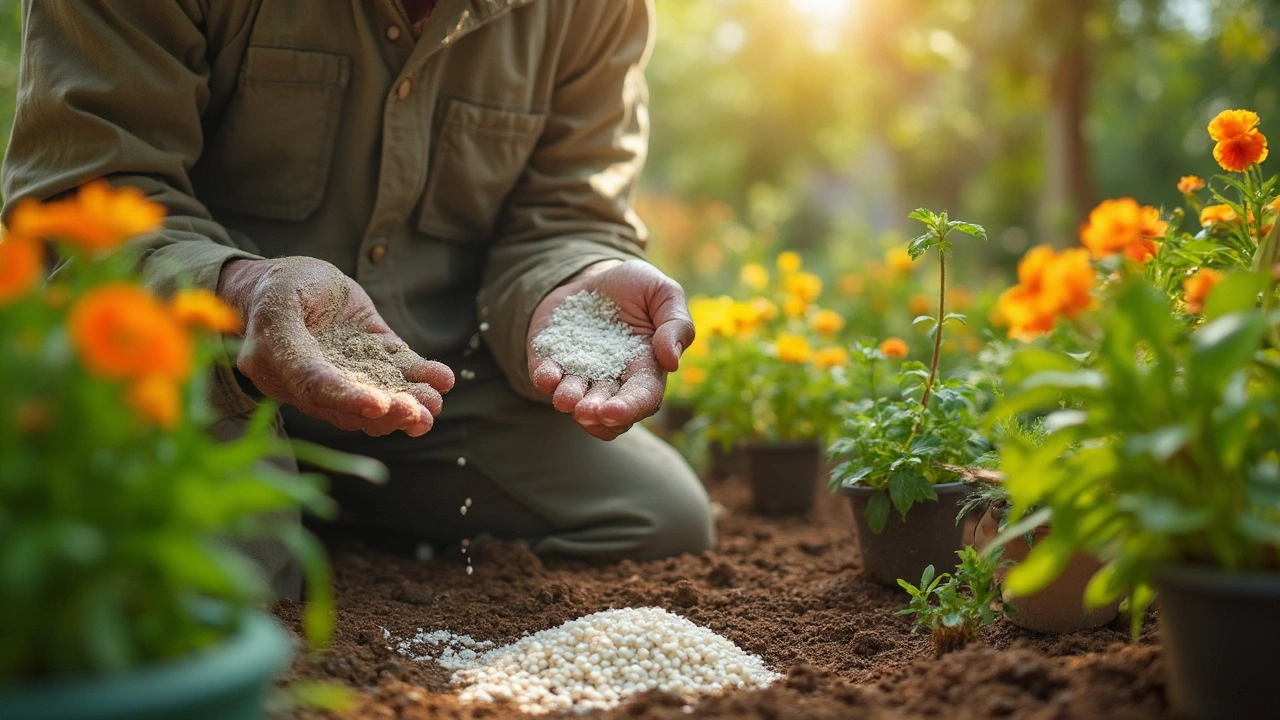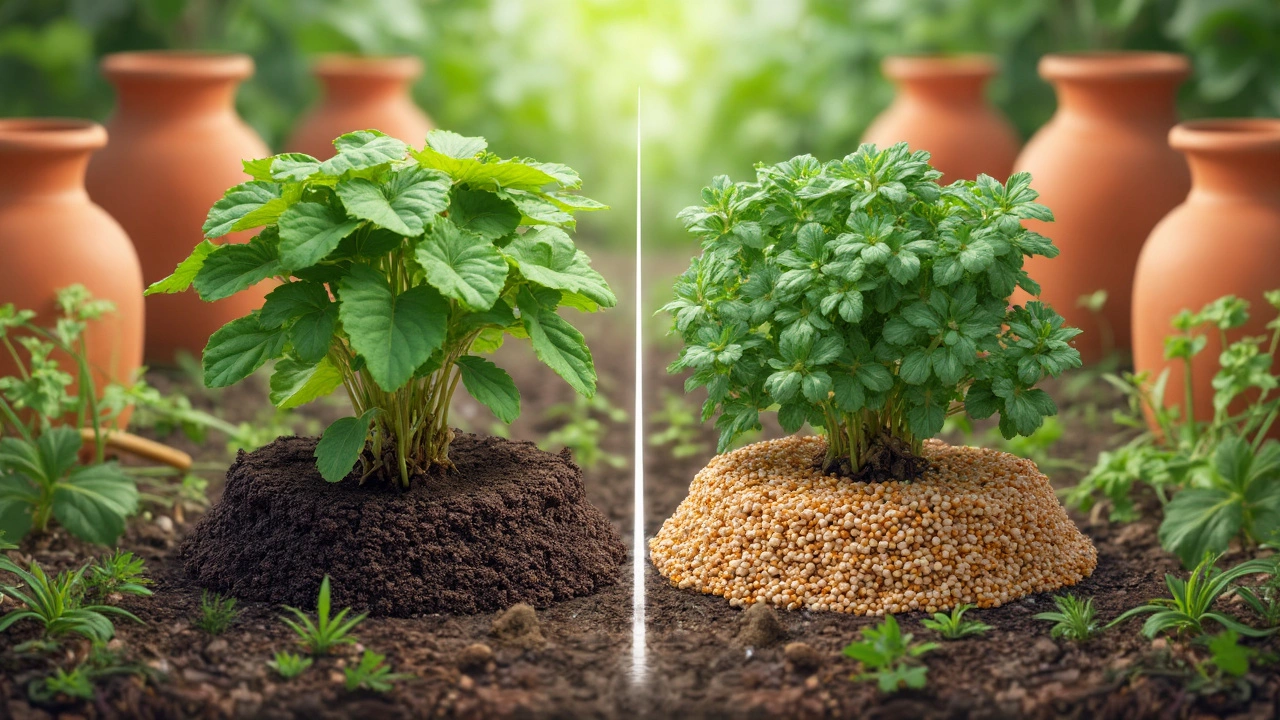Can I Use Styrofoam Instead of Perlite for My Garden?

Ah, gardening—the silent therapist under open skies. If you've ever tried improving your garden soil, you know that choosing the right additive can be like picking out the perfect pair of shoes. Perlite is often hailed as the go-to for those looking to boost soil drainage and aeration. But let's say your local garden center ran out of perlite. Can you get away with using Styrofoam instead?
Before you toss that old coffee cup into your plant pot, let's take a closer look. Perlite is a volcanic glass that, when heated, pops like popcorn into those little white bits you see bagged at garden stores. It's perfect for helping roots breathe and stopping water from turning your pots into swamps. Styrofoam, on the other hand—also white, also lightweight—is made from expanded polystyrene. It's what keeps your takeout hot, but is it good for your flora?
Some folks think if it looks the same, it does the same. But there's more to it. Unlike perlite, Styrofoam isn't porous. While it can aid in drainage to some extent, it doesn't offer the same benefits for aeration. So, is it worth the swap? And are there environmental concerns buzzing around this idea? Keep reading, and by the end, you'll know if those Styrofoam pieces should stay in your seedlings or be banished to the blue bin.
- Understanding Perlite and Its Role
- Styrofoam as a Garden Substitute
- Benefits and Drawbacks of Each
- Making the Right Choice for Your Garden
Understanding Perlite and Its Role
So what's the deal with perlite that gets all green thumbs twitching? This stuff is pretty much the miracle ingredient for anyone looking to improve garden soil. It's a form of volcanic glass, heated until it blows up like a bag of popcorn. The result is those little white, lightweight bits that look like mini snowballs.
Why use perlite? Well, it's all about helping your plants' roots breathe while keeping the water moving. Imagine planting a veggie patch where water doesn't just hang around until your plants are swimming. Perlite battles soil compaction, allowing water to flow while air pockets remain for root health. So, your plants avoid the dreaded root rot, all while growing happier and healthier.
Perlite's pretty neat for container gardening too. In pots where drainage is critical, it absorbs excess moisture and releases it as needed, almost like a soil safety net. And get this—it's pH neutral, which means it won't throw your soil's acidity balance out of whack. Testing shows it can enhance root growth by 10-20% compared to plain soil.
Not to forget, perlite is super versatile. You can mix it into outdoor beds, sprinkle it in seed-starting trays, or even use it in hydroponic systems. It might seem like a small thing, but its role in soil health is massive. When thinking about ways to boost your garden's soil, perlite should definitely be in the mix.
Styrofoam as a Garden Substitute
Alright, so you're thinking about using Styrofoam to lighten up your potting soil. It's easy to see why—styrofoam packing peanuts and broken pieces from package boxes are just lying around, right? Before you start crumbling those bits into your soil, let's look at what happens.
First off, while both Perlite and Styrofoam are lightweight, they function differently in your garden. Styrofoam's main purpose is packaging, not soil care. It's not going to enhance water retention or provide the minerals that perlite does. Plus, it doesn't break down like organic matter, which means it could stick around in your soil for ages—not the most environmentally friendly choice.
On the plus side, what styrofoam does offer is being cheap (pretty much free if it's leftover from deliveries), and adding bulk without the weight. Some gardeners use it at the bottom of large pots to save on soil, but even then, it's not doing much for the plants themselves.
Here's a quick comparison to clear things up:
| Feature | Perlite | Styrofoam |
|---|---|---|
| Porosity | Highly porous | Not porous |
| Biodegradable | Yes | No |
| Cost | Low | Free if recycled |
Using Styrofoam to replace perlite isn't without its risks. Over time, it can degrade into microplastics, affecting your soil quality and possibly harming your plants. Environmental concerns aside, it doesn’t really deliver those perks that perlite brings to your container gardens. Consider these points when you're deciding if it's worth it to make that substitution.

Benefits and Drawbacks of Each
Let's get down to brass tacks: Why choose one over the other? Both Styrofoam and Perlite bring something to the table, but they're not created equal, especially when it comes to your garden's needs.
Starting with Perlite, it's the real champ when it comes to keeping your garden soil aerated. This volcanic gem is crucial for helping plants breathe, reducing compaction, and aiding root growth. It can hold onto a small amount of water while letting the rest drain through, making it perfect for preventing root rot. Plus, it's all-natural, which means it comes without the guilt of leaving a heavy carbon footprint.
Now, onto Styrofoam. It's lightweight and readily available. In the short term, using it might seem like a decent fix for drainage issues. The Styrofoam blocks can help stop waterlogging, saving you from the muddy mess. But here's the kicker: Styrofoam really lacks the porosity of perlite. That means it doesn't do squat for root aeration and can't hold moisture for plant roots to access when needed.
Styrofoam might break down much slower than natural materials, possibly sticking around in your soil much longer than you'd like. It's not biodegradable, raising environmental concerns if used extensively. Not to mention, it's easy to mistake compromised food containers for garden-ready materials, which can introduce contaminants into your soil.
On balance, the DIY vibe of using leftover Styrofoam might feel resourceful, but it doesn’t replace the well-rounded benefits of perlite. If you’re leaning towards improving your garden soil, consider the long-term impact of each material on your plants and the environment.
So, there you have it—using Styrofoam for a quick fix or sticking to perlite for a more sustainable choice. At the end of the day, weigh your options and think about what works best for your specific gardening needs and ideals. After all, a happy garden leads to a happy gardener!
Making the Right Choice for Your Garden
So, you're standing in your garden, staring at the ground, and pondering whether to go with Styrofoam or Perlite. Let me help you out here. First off, it's important to understand what your garden needs. Are you looking to improve soil drainage, aeration, or maybe reduce soil compaction? Each situation could tip the balance in favor of one over the other.
If drainage and aeration are your main goals, perlite reigns supreme. Its natural pores allow air and water to flow effortlessly, giving your plants the breath of fresh air they deserve. Plus, it doesn’t break down in the soil, meaning it keeps doing its job for years. But what about Styrofoam? It will definitely help promote drainage because it doesn't absorb water, but it lacks the ability to enhance aeration effectively, which might leave your plant roots gasping, especially in heavier soils.
There's also the environmental angle. While perlite is sourced responsibly from volcanic glass, Styrofoam comes from petroleum—a non-renewable resource. Once tossed, it can take hundreds of years to break down. So if your garden is your paradise and eco-friendliness matters to you, perlite's the greener way to go.
That said, if you have a small pot that occasionally needs a drainage fix, using leftover Styrofoam might not be a bad short-term hack. Just be sure to crush it into small chunks to mix evenly. But remember, this doesn’t replace the long-term effectiveness of perlite.
Ultimately, choosing between Styrofoam and Perlite comes down to your specific gardening needs. Each has its place, but knowing what suits your plants best is key. Consider your garden's requirements, the environmental impact, and maybe even give both a small trial run before committing on a larger scale. Your plants will thank you!





